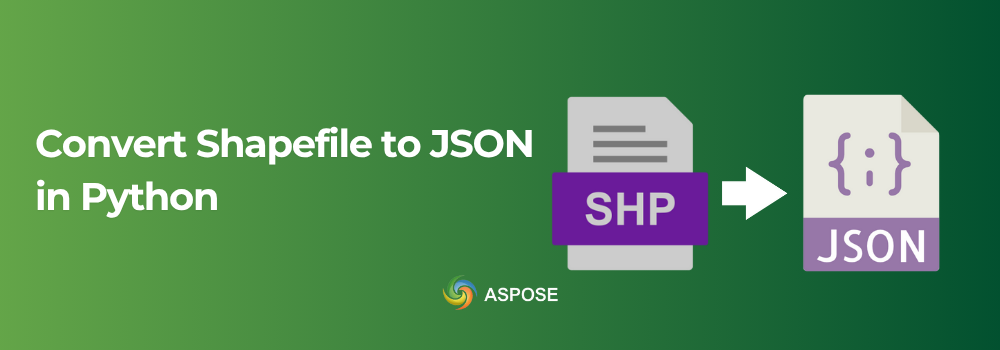Shapefiles (.shp) play an important role in the field of geospatial data processing. This file format stores geographic vector data such as points, lines, and polygons. In modern-day technology, web mapping tools prefer JSON format for greater portability and integration. Therefore, SHP to JSON conversion might become inevitable for browser-based rendering. So, in this blog post, we will run through how to convert Shapefile to JSON in Python using Aspose.GIS for Python via .NET. This GIS SDK is powerful and provides features to process and export geospatial data.
GIS SDK Installation
Asose.GIS for Python via .NET comes with a developer-friendly installation. It gives you the option to download the SDK files or you may run the following command in the command line interface:
pip install aspose-gis-net
Convert Shapefile to JSON in Python
Now, we are all set to write some code. It is super easy to develop an SHP to JSON converter using Aspose.GIS for Python via .NET. You can follow the code snippet given below to convert Shapefile to JSON in Python:
Output:
Have a Question?
You may ask your questions on our forum.
SHP to JSON - Get a Free License
You can obtain free temporary license to try Aspose.GIS for Python via .NET.
Final Thoughts
To conclude, Aspose.GIS for Python via .NET provides a reliable way to convert Shapefile to JSON in Python programmatically. This GIS SDK is a production-ready solution for developers to automate the conversion of GIS file formats. In addition, you may visit the documentation and GitHub repo for a closer look.
FAQs
Q: How do I convert SHP files to JSON? A: You can convert Shapefile to JSON using Aspose.GIS. This GIS SDK is easy to integrate and use. This link demonstrates the implementation in Python.
Q: What is a SHP file? A: A Shapefile is a geospatial vector data format used to store geographic features like points, lines, and polygons. It’s commonly used in GIS (Geographic Information Systems) for mapping and spatial analysis.
